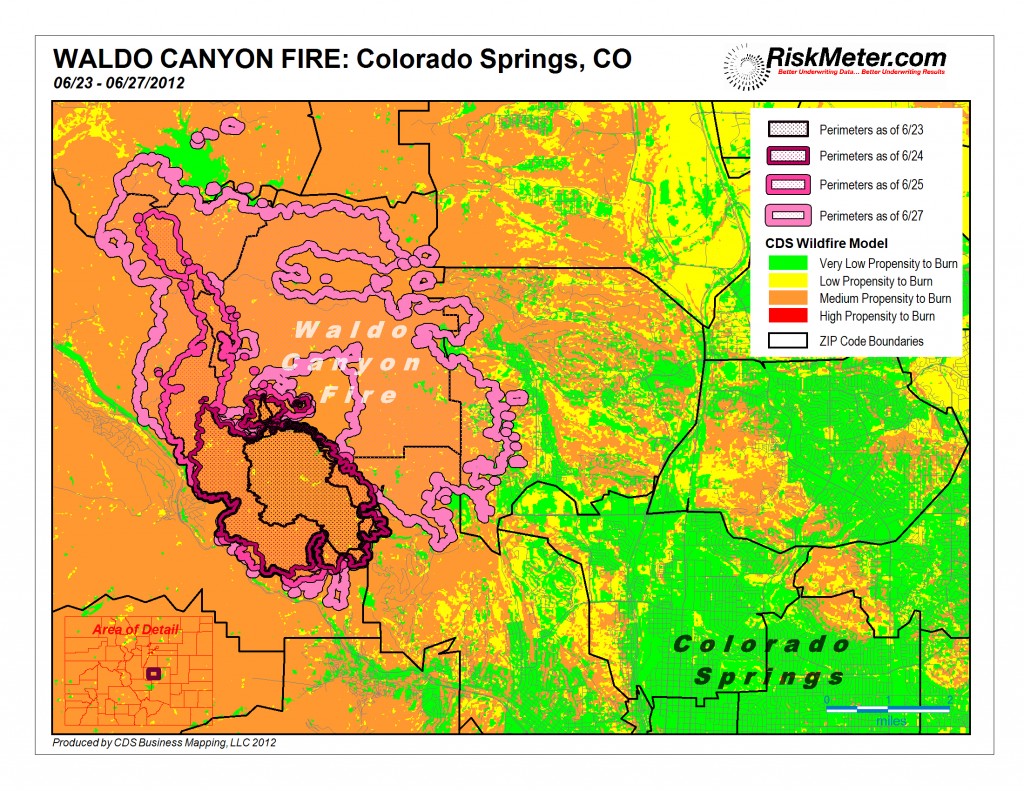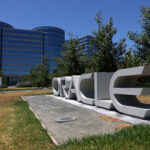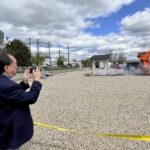The Waldo Canyon Wildfire in Colorado in the state’s second most populous city has reportedly destroyed hundreds of homes – and that number may get much higher.
The fire, which forced the evacuation of more than 32,000 people, has consumed 18,500 acres and is only 5 percent contained.
According to officials roughly 20,000 residences and 160 commercial structures are threatened.
Based on the rapid growth of the fire perimeters and the amount of unburned fuel in those areas shown by recent infrared aerial photography, there could be many more than a few hundred homes eventually destroyed by the fire, according to an executive at Boston, Mass.-based risk analysis firm RiskMeter Online.
“There’s a lot of houses in harm’s way,” said Dan Munson, RiskMeter’s founder. “My gut says they’re going to lose a lot of houses in this. I could be wrong; I’m hoping I’m wrong.”

The wildfire is Colorado’s second major burn. The High Park Fire, considered the state’s second largest and its most destructive to date, has burned 87,284 acres and destroyed 257 homes. The fire, which was caused by a lighting strike, is 75 percent contained. The cost of the fire to date is $33.1 million. Gov. John Hickenlooper has authorized roughly $25 million in emergency funds for the fire.
But Munson says that based on the Waldo Canyon Fire’s growth and the number of residences being threatened, the damages could exceed the High Park Fire.
“This one I think is going to be even bigger than that,” he said.
Munson said that while tools like RiskMeter’s have been available for some time, underwriters have been reluctant to establish any rigorous rules about insuring homes so close to unburned fuel – especially in a state like Colorado, where people seek out lifestyles so close to nature.
“In Colorado with the whole wild land-urban interface, you’d knock out a lot of the opportunity in the market if you have a very conservative tool,” he said.
However, with the High Park Fire and Waldo Canyon Fire in recent memory, those attitudes may change, he added.
“With these big losses facing the industry in Colorado, I think you’ll see that changing,” said Munson, who noted that insurance professionals can gain access to a burn map and a list of ZIP codes that have been burning or may burn based upon the company’s current model by emailing Paul Ptashnick at pptashnick@cdsys.com.
In addition to high winds, continued hot weather and low relative humidity, along with massive amounts of unburned fuel, have contributed to increase fire dangers in Colorado. The Waldo Canyon Fire has the state faced with what could become one of the worst fires to hit the American West in decades.
However, the Associated Press reported the weather forecast offered some optimism for firefighters to make progress with the temperature expected to reach into the mid-80s and humidity at between 15 to 20 percent, which was about 5 points higher than Wednesday and much higher than the single digits the area had seen last week. Winds were forecast to be 10 to 15 mph.
No estimates on insured losses have been made available. Several communities have been under siege by the fire, as has landmarks like Pikes Peak, and more than 120 soldiers helped stop flames advancing on the U.S. Air Force Academy, the AP reported.
Topics Colorado
Was this article valuable?
Here are more articles you may enjoy.


 Growing Progressive Set to Hire 10,000+ in Claims, IT, Other Roles
Growing Progressive Set to Hire 10,000+ in Claims, IT, Other Roles  Billionaire Ellison Is Moving Oracle to Nashville From Texas
Billionaire Ellison Is Moving Oracle to Nashville From Texas  Insurers Get Green Light to Pay Less Than Billed Charges in Florida PIP Cases
Insurers Get Green Light to Pay Less Than Billed Charges in Florida PIP Cases  Growing Wildfire Risk Leaves States Grappling With How to Keep Insurers From Fleeing
Growing Wildfire Risk Leaves States Grappling With How to Keep Insurers From Fleeing 

